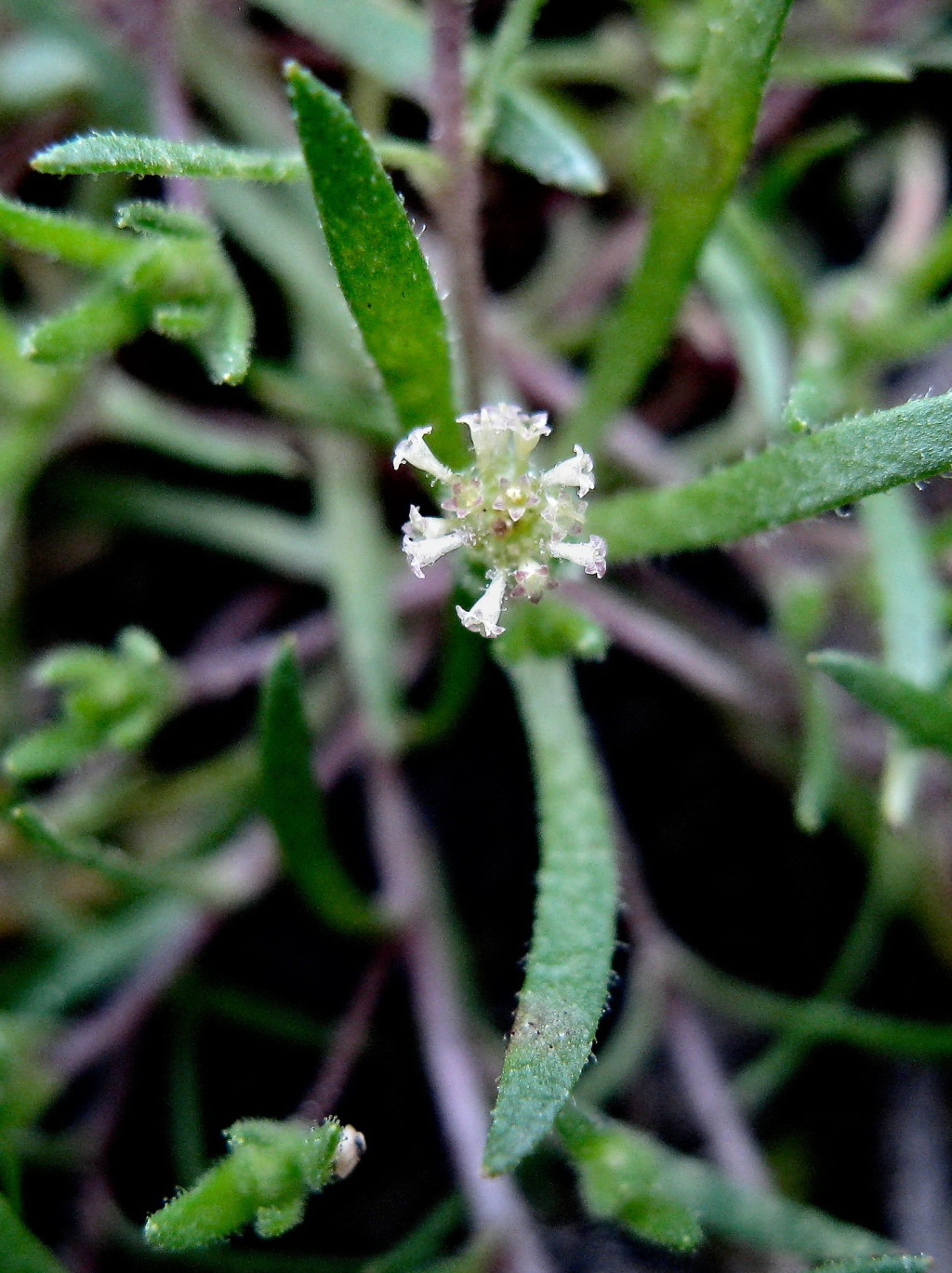Millotia muelleri
(Sond.) P.S.Short Common Bow-flowerAscending to erect herb with branches, 1–9 cm long, with stalked glandular hairs, sometimes also with white, cottony hairs. Leaves linear or lanceolate, 4.5–18 mm long, with stalked glandular hairs (rarely also cottony hairs). Involucral bracts 4 or 5, uniseriate, barely connate at the base or connate for c. two-thirds their length, 2.5–3.7 mm long, mainly herbaceous but with very narrow, often purplish, hyaline margins, hairs all or mostly glandular, a few cottony ones sometimes present. Florets 3–15; corolla 3 or 4(–5)-lobed, cream or purplish; anthers 0.35–0.45 mm long. Cypselas gradually tapered to the terete beak, 4–6 mm long in all, papillate; beak straight or slightly curved, dilated apically and demarcated from the corolla-tube; pappus absent Flowers Aug.–Nov.
LoM, MuM, Wim, VVP, MSB, RobP, OtP, Gold, CVU, GGr, DunT, HSF, HNF. Also SA. Usually occurring in mallee eucalypt scrubs, but also in open-forest, and sometimes in halophytic shrublands, mostly on sandy ground.
Two entities are discernible within this taxon. In one the base of the corolla-tube and sometimes the upper part of the beak of the fruit has cottony hairs and stalked glandular hairs. In the other the base of the corolla-tube has only stalked glandular hairs. No other characters are correlated with the different indumenta, and the entities are not given taxonomic recognition.
Short, P.S. (1999). Millotia. In: Walsh, N.G.; Entwisle, T.J., Flora of Victoria Vol. 4, Cornaceae to Asteraceae, pp. 726–729. Inkata Press, Melbourne.
 Spinning
Spinning

